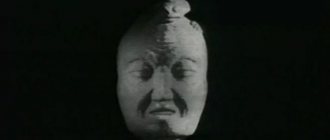Interest in psychology has increased significantly in recent years, and this is due to effective techniques of internal transformation. Self-hypnosis and active self-hypnosis help control your psycho-emotional state, manage yourself and your own life and not depend on the “mercy of fate.” My sister has been practicing self-hypnosis for 4 years, and this is a completely different person.
She gained confidence in her abilities, stopped having complexes and depression for any reason. Autosuggestion (self-hypnosis) was discovered at the beginning of the last century, but people began to become actively interested in self-hypnosis techniques not so long ago. Let's consider the issue in detail.
How to convince yourself of everything
Find out what awaits you today - Horoscope for today for all zodiac signs
Due to numerous requests from subscribers, we have prepared an accurate horoscope application for mobile phones. Forecasts will arrive for your zodiac sign every morning - it's impossible to miss! Download for free: Daily Horoscope 2020 (available on Android)
How does suggestion differ from ordinary mental activity? It lacks a critical component. That is, information is perceived as an axiom - without evidence. This presentation of information is perceived by the subconscious as true, so the necessary changes begin to occur in the depths of the human psyche. Self-hypnosis is a suggestion directed at oneself. By practicing self-hypnosis, you can change a lot within yourself and even construct a new personality.
Self-hypnosis can cause:
- the right sensations;
- necessary representations;
- necessary emotional states;
- changes in the autonomic system.
The basis of self-hypnosis is the constant repetition of verbal formulas. Correctly composed verbal formulas create positive impulses through repeated repetition. Formulas are repeated until they become a working tool of the subconscious for transforming something.
On a note! The subconscious is capable of transforming mental impulses into a physical equivalent, that is, materializing thoughts.
The rules of self-hypnosis are simple:
- all phrases are pronounced in the first person;
- all phrases must be affirmative;
- phrases should be short, but succinct in content;
- You cannot use the particle “not”; phrases must be formed without it;
- you cannot pronounce phrases automatically, without awareness;
- accompany the words with visualization (preferably).
What do self-hypnosis phrases look like? For example: “Every day I become more and more beautiful.” If you want to quit smoking, you should not repeat a phrase like “I don’t want to smoke.” It needs to be replaced with the phrase “I quit smoking.”
Psychologists have noticed that self-hypnosis works better when the body is relaxed. There is a direct relationship between physical and mental state: the more relaxed the body, the better the subconscious mind perceives information. Also, the effect of self-hypnosis depends on the strength of the desire to change something and on the degree of concentration of attention on the subject of self-hypnosis.
There are several methods of self-hypnosis:
- psychological mood;
- meditation;
- affirmations;
- mantras;
- prayers;
- visualization.
This is an incomplete list of psychotechniques to achieve the desired goal. Let's look at psychotechnics in more detail.
How to create an effective formula for self-hypnosis.
Yesterday I held a webinar on the technology of creating effective self-hypnosis formulas.
I revealed to its participants 2 formulas for self-hypnosis of a new life.
The first of the self-hypnosis formulas is in the picture above, and the second is on the bottom slide, directly following this entry.
The second formula of self-hypnosis from the webinar.
Self-hypnosis formulas from webinar participants:
Here are examples 1 and 2 of the self-hypnosis formula from the participants in my webinar yesterday.
FIRST FORMULA OF SELF-SUGGESTION:
“I prefer to eat in moderation and be healthy, slim and athletic!!!”
“I prefer to be healthy!”
“I prefer to be confident and happy.”
“I prefer to do things right away and to the end.”
“I prefer to be “collected” and carry out my plans right away.”
“I prefer to look young, be healthy, positive, live long and enjoy every day and every activity I do.”
“I prefer to be healthy, young and smell fresh.”
[google_ad]
Affirmations
This is the simplest method of self-hypnosis, based on repeated repetition of the same phrase. You can repeat the verbal formula both out loud and silently: it does not play an important role.
In an affirmation, a person reports that he has already achieved some goal. For example: “I was healed of (name) disease.”
Thanks to the constant repetition of a positive formula, it will gradually begin to displace negative thoughts and attitudes. When not a single negative thought remains, the words of affirmation will come to life - materialize.
A type of affirmation is thanksgiving. This is an even more powerful psychotechnic, since the energy of gratitude is only slightly inferior to the energy of love. When uttering words of gratitude, strong emotions appear that directly affect the psyche and consciousness.
How do gratitude affirmations work? You need to thank the universe (God, the Absolute, etc.) for something, for example, for a new home. You may not have it yet, but the energy of sincere gratitude can materialize even such a seemingly complex object. Sincere faith, gratitude and self-hypnosis will do their job, and the house will materialize.
How to practice affirmations, when should you say them and how many times? Psychologists claim that the effectiveness of affirmations directly depends on the ability to make them the essence of your day. You can do whatever you want, but keep a verbal formula in your mind and repeat it.
So, affirmation is the simplest method of influencing the subconscious. Of course, they are not comparable to visualization, so frequent repetition is required to achieve success.
Visualization
Another psychotechnic for influencing the subconscious. Visualization is like a feature film inside your mind. A person sees vivid pictures of any event, smells and tastes, feels emotions. What should you present? For example, you need your own home - imagine it. You can first make a drawing of the house or find a picture and print it on a printer.
What do we have to do? Just imagine how you are already living in this house, that you are the rightful owner (mistress) of a two-room apartment/three-room apartment/cottage/dacha. You can imagine before bed, when the body is relaxed and preparing for sleep. You need to get used to this situation that you imagine, live in it constantly.
What is the effectiveness of visualization based on? The brain perceives imaginary pictures in the same way as real ones. Some time will pass, and all your ideas will come to life and be embodied in matter.
You just need to imagine not from the side or from above, but from inside the situation. For example, you are sitting behind the wheel of a car and looking at the road. If you imagine that the car is somewhere near you, then everything will come true - next to you. It's the same with the house. You should vividly imagine inserting the keys into the keyhole and entering your home. You can first visualize empty walls, and then gradually furnish the house with furniture.
How long does it take to visualize? There is no clear time frame for this psychotechnics. It is more important to completely relax your body before visualization than to track the duration of the internal movie session.
How does self-hypnosis work?
How to explain the results of self-hypnosis if the basis of actions was only self-programming?
The answer to paradoxical mysteries lies in the unknown. Unfortunately, only 11% of our brain has been studied. The only possible scientific explanation for the results of the above cases is the deliberate emphasis on the suffering of Christ in the first example and on the character of the play in the second.
There is also a theory according to which the power of thought has the same power as physical power. For example, Joe Dispenza in his book “The Power of the Subconscious” explains in detail the work of “cells” of thought through the prism of the quantum world.
Coue's self-hypnosis method
The technique of self-hypnosis according to the Coue method is based on repeating the same phrase (or 3 - 4 phrases) in a drowsy state or immediately before falling asleep. At these moments, the human brain works at a special frequency, which allows information to penetrate the subconscious without obstacles.
For example, immediately after waking up, before opening your eyes, you need to repeat to yourself at least 20 times the key phrase “I am healthy” (or another). You will also need to find time to repeat affirmations 2 times during the day. You need to relax - lie down or close your eyes while sitting - and say the key phrase out loud or to yourself at least 20 times. It usually takes 2 - 2.5 months to materialize the plan.
LiveInternetLiveInternet
Chapter from our book “Self-hypnosis and active self-hypnosis.
How to instill health, confidence and success in yourself.” Rostov n/d: Phoenix, 2013.
To speed up work on a goal or increase efficiency, you can additionally engage in active self-hypnosis without self-hypnosis. Especially for those who want to get results as quickly as possible with minimal effort, we have several recipes.
Self-hypnosis in front of the mirror
You can practice self-hypnosis several times a day; any mirror in which you can see at least your entire face is suitable for this. Of course, the larger the mirror, the better, but you can be content with small ones.
It is more effective to practice self-hypnosis in the morning, thereby performing such psychological gymnastics, a morning ritual. You can do this along the way, between times, because... We all look at ourselves in the mirror at least once during the day.
Stand in front of the mirror, look at your reflection and affirmatively say your formula of suggestion or epithet of the desired goal, state, mood. For example, in the morning you want to get into a cheerful and working mood; to do this, say the appropriate suggestions in front of the mirror several times: “Cheerfulness! Activity!”, say or even shout (if possible) these words several times in a cheerful and active voice. Include your facial expressions, gestures, and voice into your work as much as possible; the more we involve our entire body in the work, the stronger the effect will be. Depict as much as possible, play from the heart the desired state, because... If in the reflection you look lethargic and sleepy, then even standing in front of the mirror all day will not achieve much of an effect. Repeat several times so that you like it, so that you yourself believe and get used to this role.
Recording text on the player and listening to this recording
This is perhaps the simplest method, which is especially popular among young people, but it also requires some effort. Record your suggestion formula on a voice recorder, and then listen to it on headphones throughout the day. For this, any simple digital player or cell phone that has this function will suit you.
It is better to use small headphones that are inserted into the ear; by the way, one will be enough. Insert one earphone into your non-dominant ear. A person has not only a leading hand or an eye, but also an ear. The lead is the one to which you usually put the phone, so the earphone needs to be inserted into the other ear. Then set the recording to play on repeat so that it automatically repeats itself as soon as it ends, and listen to the same recording all day (or better yet, several days). It is advisable that the suggestion formulas be simple to begin with and affect only one goal, and that the sound of the recording be adjusted so that you hear it, but it does not distract you from your current affairs.
Thus, you go about your business - communicate with colleagues, talk on the phone, work, study, read, and attention is directed to the processes in which you are involved. And at this time, almost imperceptibly, your voice instills in you useful attitudes. Your mind is busy with other things at this time, and the recording will not be perceived critically, which is what we need. Because It is non-judgmental (non-critical) perception that is one of the conditions for suggestion. This is why we immerse ourselves in self-hypnosis, to reduce our criticality, and this method can be an excellent addition during the day.
Self-hypnosis immediately after waking up or before going to bed
This technique is old, it was proposed by Emile Coue, but it also deserves attention. As they say: “everything new is well forgotten old.” Its main advantage is simplicity and good performance.
The technique is based on the fact that during the process of falling asleep or immediately after waking up, a person is more suggestible and more susceptible to attitudes. To do this, you only need to spend five minutes before going to bed or immediately after waking up. When falling asleep, repeat your settings several times (Emile Coue in his writings suggested repeating at least 20 times, counting the repetitions on a rosary), it is important that the last thoughts and words of the passing day are devoted to your goals and objectives.
This ritual can be repeated in the morning, to do this, set the alarm clock a little earlier than you usually wake up, in the morning, when you wake up, go back to bed, close your eyes and repeat the pre-prepared self-hypnosis formulas several times. If you are afraid of falling asleep again and being late, for example, for work, then set the alarm again, giving yourself 5-10 minutes to spare. If you do fall asleep, it doesn’t matter, it turns out that you gave yourself instructions immediately after waking up and before going to bed at the same time. It’s difficult to say whether this will increase efficiency, but it certainly won’t be worse.
Rituals and code words
To enhance the results of self-hypnosis, you can regularly use post-hypnotic rituals. To do this, outline in detail the main goal in your journal (what you want to achieve, what is your task), then express the essence of your goal, task in two or three sentences. And finally, compress it all down to one single signal phrase (maybe up to two or three words) or even one code word. It is advisable for this word to be pronounced to oneself in an unusual way or to be encountered very rarely in everyday life, but it is better to come up with this word for yourself or take it from another very rare and exotic language. Repeat this spell to yourself during self-hypnosis (while imagining the image of the desired goal) and throughout the day.
You can add any ritual to the code word. As a ritual, you can use quite simple and at the same time unusual actions for you. For example, you can brush your teeth with the other hand (if right-handed, then with the left, if left-handed, then with the right) and repeat your spell to yourself.
Kopytov Mikhail Alexandrovich,
hypnotherapist, director of the Siberian Hypnosis Center
Artist Hong Leung
Autogenic training according to Schultz
The essence of this psychotechnics is active self-hypnosis and self-hypnosis in a state of relaxation or hypnotic trance. Schultz bases his technique on the ancient techniques of yoga, the sensations of people who have been in a deep trance and other similar methods.
For self-hypnosis, it is necessary to achieve a state similar to the state between reality and sleep. The recommended pose for relaxation is “coachman”. To achieve the necessary relaxation of the body, you need to remember something pleasant from the past. During self-hypnosis, you should be able to combine physical relaxation with psycho-emotional activity and be able to accompany verbal formulas with figurative representations.
To practice autogenic training, you need to completely abandon everyday worries and direct your attention to the subject of concentration. You need to train every day at least once; skipping even a one-day workout will negatively affect the result.
Meditation
Meditation is the concentration of thought on one object and the exclusion of all other thoughts and experiences. An important part of any meditation is stopping internal dialogue. Inside himself, a person scrolls through different thoughts, remembers conversations with other people: his mind is constantly busy with mental activity, which is called internal dialogue.
What can you do to clear your thoughts of internal dialogue? There is a very simple technique for this: you need to look at both your hands at the same time, and carefully. The mind will immediately stop conducting internal dialogue, as it will be busy contemplating two objects at the same time. Another method to stop the flow of unnecessary thoughts: focus on your breathing process, carefully record each inhalation/exhalation and listen to the sound of breathing. After a couple of minutes, your thoughts will be completely cleared of the vain dialogue.
The stages of meditation are as follows:
- determination of the object of meditation (installation);
- entering a state of emptiness;
- feeling within oneself of a given attitude and contemplating it;
- exit from a state of emptiness with an attitude embedded in the subconscious.
For meditation to be effective, the instructions must be short and succinct. It is important to feel them inside yourself, your inner world. How long will this take? Everyone has their own deadlines for implementation. During meditation, you need to be aware of the creation of another reality, as if in an “empty place” or in emptiness. The meditation can be repeated as needed.
The process of self-hypnosis
Self-hypnosis is the independent, conscious introduction of oneself into a state of hypnosis for a certain period of time. The technique allows you to put a person into a trance without the participation of specialists. Meditation involves relaxing the mind and body to appropriate music or a calm voice by falling into a state of sleep.
Before auto-training, you need to make sure that no one comes to visit, turn off your mobile phone, and ask family members not to disturb you for half an hour.
Step-by-step technique for putting yourself into a trance
- Take a comfortable position.
- Free your mind from all thoughts.
- Focus on your desire.
- Close eyes.
- When you say “one” to yourself, you have to think about how your eyelids are getting heavier. Do this until the feeling becomes real.
- Mentally say “two” to yourself and repeat “my eyelids are so heavy that they close themselves.” Concentrate on this stage, but do not forcefully close your eyes.
- Tell yourself “three” and think “my eyelids are very heavy and I won’t be able to open them on my own even if I want to.” At this stage, the person enters a deep trance state.
At the end of the meditation, tell yourself “open your eyelids.”
Other methods of self-hypnosis
There are situations when people are afraid to enter a trance state with their eyes closed; they need to maintain a state of consciousness. Then you can carry out the procedure of self-hypnosis by concentrating on any one object, sound or object. It can be anything: a vase, a flower on the wallpaper, a table lamp, a heartbeat, your breathing, a monotonous sound, etc. Having chosen an object or sound that suits you, you need to focus on it as much as possible, looking at only one point.
After about 10 minutes, the body will begin to relax, and a feeling of bliss and lightness will appear inside. If you have chosen the sound of your heartbeat, then in this state of light trance it will seem that its beat fills the entire room, with no other sounds nearby. If you select an item, it will appear larger than it actually is. When we saw or heard changes, self-hypnosis was successful.
Yoga and meditation
Yoga is one of the methods of self-programming that appeared earlier than other psychological auto-trainings. After just 2 months of training, you can notice changes in both mood and physical fitness. Yoga helps to get rid of diseases of the body and mind, gives a good mood, and calms the nervous system.
Animal watching
Pets, especially cats, often put themselves into a trance state called akinesis. Every owner sometimes notices that the pet is in prostration with its eyes closed and quietly purring. This way they get rid of negative energy and cleanse the atmosphere in the house. Try to feel this state as well.
Self-hypnosis
Psychologists agree that self-hypnosis is the most powerful psychotechnic of all. First you need to completely relax physically and psychologically. You need to achieve a state of peace, and then say to yourself, “I am deeply asleep.”
After this, you should slowly count from five to zero and plunge into a state of hypnotic oblivion. After saying the word “zero,” you need to say to yourself again: “I’m sleeping deeply.” You have reached the depths of your own subconscious. Now we need to anchor this state for future self-hypnosis practices. Tell:
“When I say the phrase “I am in deep sleep,” I enter a state of self-programming.”
After this, you need to repeat the self-programming formula several times, for example, “I am completely healed and healthy.” Programming should only be in a positive way and without the particle “not”.
Imagination against will.
This is what the great hypnologist wrote about the power of imagination:
“There is great power within us which, if properly directed, will give us control over ourselves. It allows us not only to avoid physical and mental illness, but also to live a happy life.” Emil Coue.
2 factors of imagination power in self-hypnosis:
1) When willpower and imagination come into conflict, imagination always wins. This is explained by the fact that the source of will is on the periphery of the brain, and imagination is in the center.
2) Imagination is easier to develop and improve than willpower. Willpower must be supported emotionally, thereby causing stress. The imagination is free and reduces stress levels.
[yandex_ads]
Thought Release Technique
How to quickly clear your thoughts of negative memories? For this there is a simple and effective psychotechnique “Balloon”. Imagine a deflated balloon above your head. Take a breath, and as you exhale, imagine how all the black negative thoughts come out of your head like a dark cloud into a ball. The balloon is inflated not by air, but by your negative thoughts.
Do this until you are free of the burden of negative memories and worries. Then take a deep breath and exhale and imagine how a round ball, along with your thoughts, comes off and flies into the sky. This psychotechnics always helps, especially if anxious thoughts prevent you from falling asleep at night.
Introduction to a hypnotic state
Take a comfortable position in a chair or lying on the sofa with your arms extended along your body.
"Closing your eyes"
This refers to a condition in which, while awake, you cannot open your eyes.
1. Say “one” to yourself and at the same time think:
"My eyelids are getting heavy"
Just think about it, focus on this thought, be imbued with it, believe in it while you think about it. Drive away any other thought, such as this: “I wonder if this will work.” Focus on one thought: “My eyelids are becoming very, very heavy.” If you have only this one thought, if you concentrate on it, imbue it and believe it at the same time as you think about it, your eyelids will begin to get heavy. Don't expect them to get very heavy; when they start to get heavy, move on to the next phase.
2. Say “two” to yourself and at the same time think:
“My eyelids are now very heavy, they close on their own.”
As in the first phase, think only about this, concentrate on this thought, believe in it. Do not forcefully close your eyes or try to keep them open, but concentrate on a single thought: “My eyelids are now so heavy that they are closing themselves,” and at the same time, while you repeat this single thought, let your eyelids act on their own. If you become imbued with this thought, concentrate on it to the exclusion of all others, and believe in it while you think about it, your eyelids will slowly close. When the eyelids close, leave them in this state.
3. Say “three” mentally and at the same time think:
“My eyelids are tightly closed, I cannot open my eyes, despite all my efforts.”
As before, repeat this mentally, think only about this, concentrate on this thought, imbue it with it and believe in it. But at the same time try to open your eyes; you will notice that you cannot do this until you say “open”, and then your eyes will instantly open.
4. Next, when your eyes close, you will move to the next phase and think: “My eyelids are tightly closed, I cannot open my eyes despite all my efforts.” You must constantly return to this thought, this one thought, and while you are thinking this, try to open your eyes. The entire time you concentrate on this single thought, your eyelids will remain closed. Your eyelid muscles will strain to open your eyes, but they will remain closed until you say out loud or mentally:
“Open up!”
Acceleration
Carry out the first phase as before, and at the moment when your eyelids become heavy, move on to the second phase. While you say “two,” think the said thought once (twice at most), but eliminate all other thoughts. When your eyes are closed, say “three” and again think about the said thought once (or at most twice), but only about it. Your eyelids will remain closed. Open them with the “open” command.
Now begin again whatever you were doing, but instead of saying “one,” “two,” and “three,” limit yourself to thinking about those numbers in the same order. Finally, do the entire exercise without numbers, but repeat the thought of the first, then the second and third phases once each. With enough practice, you will be able to close your eyes and keep your eyelids closed almost instantly by just thinking the thought of the third phase once.
You will soon notice that you have acquired speed and are able to control yourself more and more confidently. Once you have mastered the ability to concentrate on only one thought (phase one or two), you can almost instantly move to the third phase, which represents a complex thought. The ability to quickly close your eyes is the first success in self-hypnosis.
Simple suggestions
When you achieve the closing of your eyes and relaxation, which will intensify simultaneously with the closing of your eyes, you will have reached the first stage of the trance of self-hypnosis. Now you are able to perceive the suggestions that you will give yourself.










